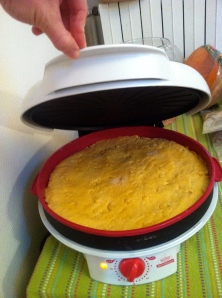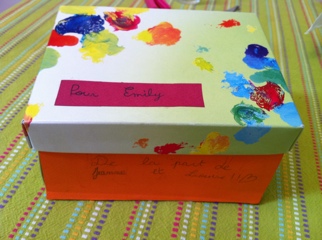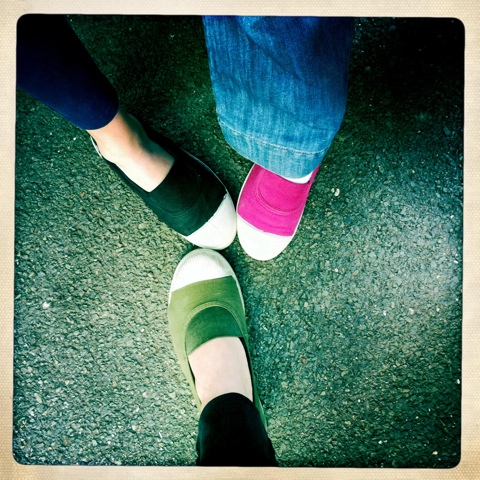Those of you who have been following me on here lately would be completely justified in having the impression that all I think about is food. And yeah, that’s pretty much the case. Buying groceries gets pretty exciting when it’s the only purchase you can possibly justify. It’s not just that I suffer from an unfortunate combination of poverty and gluttony, though. Considering I’ve spent the past two weeks explaining Thanksgiving to French children, I couldn’t help but get a little obsessed with it.
My lessons went really well. I was pleasantly surprised at how interested the students were, listening more attentively than usual (I’m sure it didn’t hurt that I was just explaining it in French…) and asking lots of questions. They were particularly curious about Indians/Native Americans (I taught them both terms, but “Indian” was easier for them), which was great. I had ethical objections to feeding them the b.s. “The Pilgrims and Indians became good friends” story—they saw right through it, anyway—and their questions gave me a chance to expand upon it. Condensing the first of American history’s many shameful chapters into a 45-minute lesson for 9-year-olds is no easy feat, but I think I managed to strike a compromise between yadda yadda-ing out the Indians and completely traumatizing my students. Consequently, today I am thankful that I won’t have to cover slavery, atom bombs, Iraq…sadly, I could go on…
Best question we received, upon showing them photos of a Plymouth village reconstruction: “Do Americans still dress like the Pilgrims?” (Of course I said yes.)
For my more advanced students, I made a fill-in-the-blank worksheet. I read the sentences aloud, including the answer; all they had to do was write the missing word as they heard me say it. As I got started, I worried it would bore them to tears—it was definitely challenging for them to follow that much English—but they responded really well. I’ve noticed that, unlike Americans, my students want rules to follow. They’re accustomed to a regimented system, and I think it freaks them out to let loose. (I’ll tell you more about French schools soon, I promise.)

I spent hours on the handout...
My younger students got a worksheet, too, but all they had to do was label the Thanksgiving foods that we went over.

Critical vocabulary.
The idea of cranberry sauce was repulsive to them. Cranberry sauce happens to be my favorite part of the Thanksgiving dinner, so I felt kind of defensive about it. I was tempted to say, “Anyone who eats foie gras relinquishes the right to call anything I eat disgusting,” but I suppose it’s not their fault that they’re French…
So with all that turkey talk on my mind, I had to do some cookin’.
As the recent post in which I gushed about the delight of simple meals would attest, my “cooking” usually just involves a few ingredients that have to be steamed or sautéed. From time to time, though, I enjoy taking on a big, labor intensive challenge in the kitchen. Last Thanksgiving, for instance, never having roasted so much as a bell pepper, I roasted the turkey. I had certainly never dealt with the carcass before, but that didn’t stop me from boiling it down for turkey noodle soup. Since then, I’ve also made tiramisu—which is a freakin’ lot of work!—as well as ketchup, which is just something you don’t even realize that anyone other than Heinz can make.
Like ketchup, it only recently occurred to me that pumpkin pie is something a person can make. I had always kind of wondered how pumpkins could possibly be turned into the stuff in the pie. I imagined that it demanded machinery too big for a single home’s kitchen, which is why Americans just buy their pumpkin pies—and also why 90% of the pumpkin pie I’ve consumed in my lifetime has been mediocre.
So now that I live in France, where I have a tiny kitchen that lacks an oven and where pumpkin purée is nowhere to be found, what better time than the present to make my first pumpkin pie?
It was quite labor-intensive—it took me nearly four hours from beginning to end. (It probably didn’t help that I kept having to climb up to my internet shelf to glance at the directions that I wasn’t actually following.)

I started out with two big hunks of some variety of pumpkin that, if whole, would resemble the one that took Cinderella to the ball.
In lieu of an oven, it was really handy that my roommate has a device called a “Pie Success.” We don’t, however, have the manual for it. Lest the Pie Success ruin something, I figured it should be something with cheap ingredients that didn’t take me hours and hours to prepare…

So as a test run, I made cornbread, which was indeed a success.
While that was baking, I made the pumpkin purée. As it turns out, it’s no big deal. If I’d had any microwave-safe dishes big enough to contain 2.5 kilos of pumpkin, it wouldn’t even have taken very long.

- Boil ’em, skin ’em, mash ’em, drain ’em. (…Why does that sound so much like the mantra of a serial killer?)
And about an hour in the Pie Success later, ta-da! A pumpkin pie made from actual pumpkins in a completely inappropriate kitchen.
Riding on last evening’s creative vibe, I spent this morning playing with markers.
And this evening, I’m headed to a Franksgiving feast that will be the first for most of the invitees, so here’s hoping that the pie tastes as good as it smells…
















